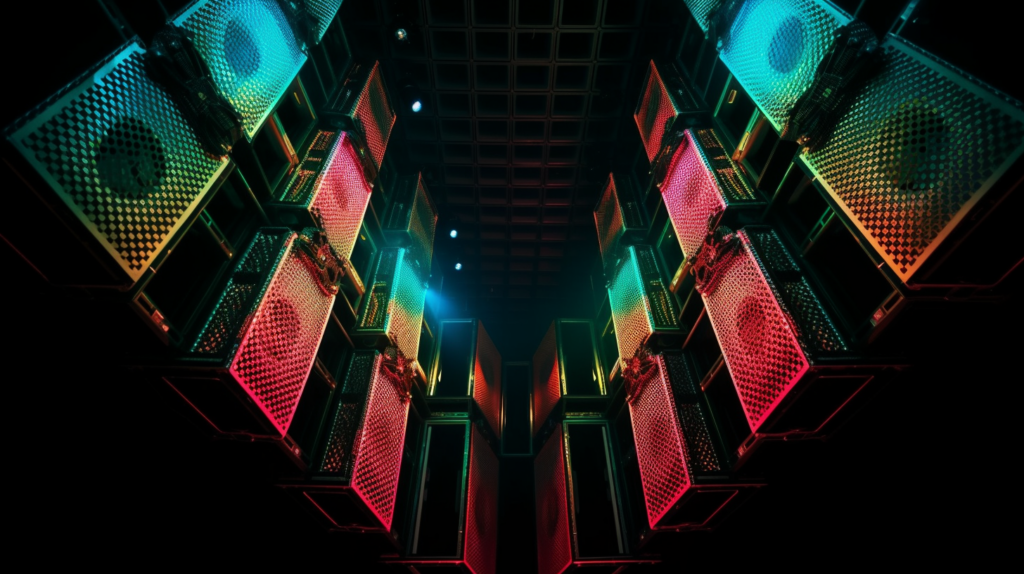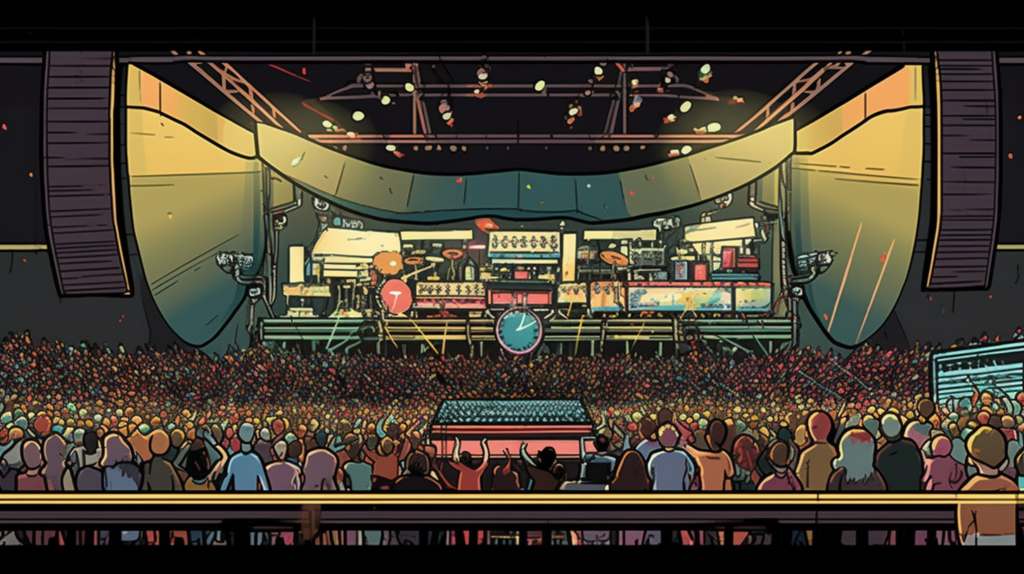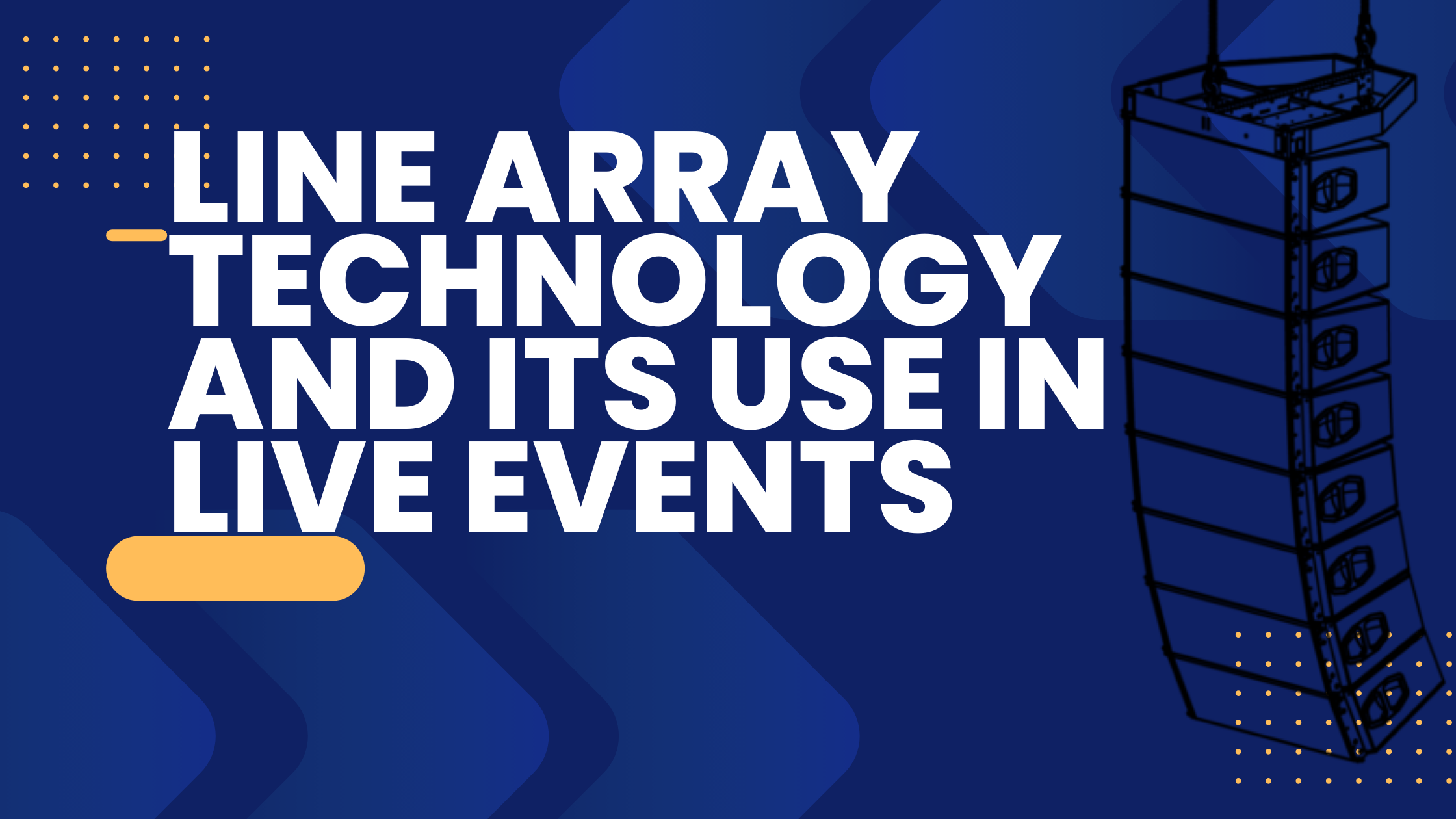Line Array Technology and its Use in Live Events
Welcome, event planners, to another exciting blog post! Today, we’re going to dive into the fascinating world of line array technology and its invaluable use in live. Whether you’re a seasoned pro or new to concept, this article will provide you with insights, tips and explanations to help you understand and harness the power of line array systems. So, let’s get started!
What is Line Array Technology?
Line array technology is a sound reinforcement system that utilizes multiple speakers arranged in a vertical line, or array, to distribute sound evenly throughout an event venue. This innovative approach to audio engineering has revolutionized the way sound is delivered in large gatherings such as concerts, festivals, conferences, and sporting events.
The primary goal of line array systems is to deliver clear, balanced sound that can reach every corner of the venue, ensuring an immersive and engaging experience for the audience. By strategically positioning multiple speakers, line arrays overcome the limitations of traditional speaker setups, providing consistent audio quality and coverage, even in challenging acoustical environments.

The Components of a Line Array System
To better understand line array technology, let’s explore the fundamental components that make up a typical line array system:
1. Loudspeakers:
Loudspeakers are the heart of any line array system. They come in various sizes and configurations, but the most common types are full-range speakers and subwoofers. Full-range speakers cover the entire audio frequency spectrum, from low to high frequencies, while subwoofers specialize in reproducing deep bass frequencies. The number and size of loudspeakers used in a line array system depend on the venue size, desired coverage, and the audio requirements of the event.
2. Rigging Hardware:
To achieve the vertical array configuration, line array speakers need reliable rigging hardware. Rigging hardware includes mounting brackets, frames, and suspensions that securely hold the loudspeakers in place. Proper rigging is crucial for maintaining stability, safety, and precise alignment of the speakers.
3. Digital Signal Processing (DSP):
Digital Signal Processing, or DSP, is a vital component that controls and optimizes the audio signal sent to the line array system. It allows sound engineers to adjust various parameters such as equalization, time alignment, and coverage patterns, resulting in improved sound quality and intelligibility. Advanced DSP technologies also offer features like automatic feedback elimination and system protection, ensuring a seamless and worry-free audio experience.
4. Amplifiers:
Amplifiers are responsible for powering the loudspeakers in a line array system. They take the low-level audio signal from the mixing console and amplify it to the required level. Choosing the right amplifiers is crucial to ensure optimal performance and efficiency. It’s important to match the power capabilities and impedance requirements of the loudspeakers for seamless integration.

Benefits of Line Array Technology in Live Events
Now that we understand the components, let’s explore the numerous benefits that line array technology brings to live events:
1. Improved Sound Quality:
Line array systems excel at delivering superior sound quality over long distances. By using multiple speakers in a vertical line, line arrays achieve consistent sound dispersion, reducing variations in volume and frequency response throughout the venue. This results in a more even, balanced sound experience for the audience, regardless of their location.
2. Enhanced Coverage:
One of the critical advantages of line array technology is its ability to provide uniform coverage throughout the venue. By configuring the speakers in a vertical array, line arrays focus sound energy precisely where it’s needed, ensuring everyone in the audience receives clear, intelligible audio. This is particularly crucial in large venues with challenging acoustics, where traditional speaker setups may struggle to provide adequate coverage.
3. Increased Gain Before Feedback:
Feedback is the unpleasant occurrence when a microphone picks up and amplifies its own signal, creating a high-pitched squeal. Line arrays help mitigate feedback issues by delivering sound energy primarily to the desired audience area, rather than reflecting off surfaces and returning to the microphones. This allows for higher gain before feedback and greater microphone clarity, making line array systems ideal for events that require a significant number of open microphones, such as panel discussions or live interviews.
4. Aesthetically Pleasing:
In addition to their functional advantages, line array systems offer an aesthetically pleasing setup. Unlike traditional speaker arrays that may obstruct sightlines or distract from the event’s visual elements, line arrays are sleek and unobtrusive. Their discreet, vertical form factor seamlessly blends into the event environment, keeping the focus on the performers and stage.

Tips for Working with Line Array Systems
Now that you’re excited about incorporating line array technology into your live events, let’s delve into some practical tips for working effectively with line array systems:
1. Venue Analysis:
Before selecting and installing a line array system, it’s essential to conduct a thorough analysis of the event venue. Factors such as room size, shape, acoustics, and audience positions play a crucial role in determining the number and placement of speakers in your line array system. Engage with experienced audio professionals who can assist with onsite visits and detailed venue analysis to ensure optimal performance.
2. System Design and Optimization:
Line arrays are highly customizable, offering a range of adjustable parameters. Work closely with audio engineers to design and optimize the system for your specific event requirements. Factors such as vertical coverage angles, horizontal dispersion patterns, and sound focus zoning can be fine-tuned to match the venue and audience needs. Proper system design and optimization are key to achieving exceptional sound quality and coverage.
3. Rigging Safety:
Ensure the rigging hardware used to suspend line array speakers is suitable for the load-bearing requirements. Rigging safety should never be compromised, as improper installation or inadequate rigging can pose significant risks to event attendees and staff. Engage qualified rigging professionals who have experience with line array systems to ensure a secure and safe setup.
4. Professional Audio Team:
While line array technology has simplified audio system deployment, it’s crucial to engage a professional audio team for complex live events. They possess the expertise and experience necessary to handle and operate sophisticated line array systems effectively. Partnering with audio professionals will ensure seamless setup, sound optimization, and troubleshooting during the event, allowing you to focus on other aspects of event coordination.

Conclusion
In conclusion, line array technology has transformed the live events industry, providing exceptional sound quality, even coverage, and improved audience engagement. Whether you’re organizing a massive concert or a corporate conference, incorporating a well-designed line array system can elevate your event to new heights.
Remember, understanding the components, benefits, and tips for working with line array systems is crucial for successful implementation. Conduct venue analysis, design and optimize the system, prioritize rigging safety, and engage professionals to ensure a flawless audio experience.
We hope this blog post has shed light on the wonders of line array technology and its role in live events. Now it’s your turn to explore the possibilities, push the boundaries, and create unforgettable experiences for your audience. Happy planning!

